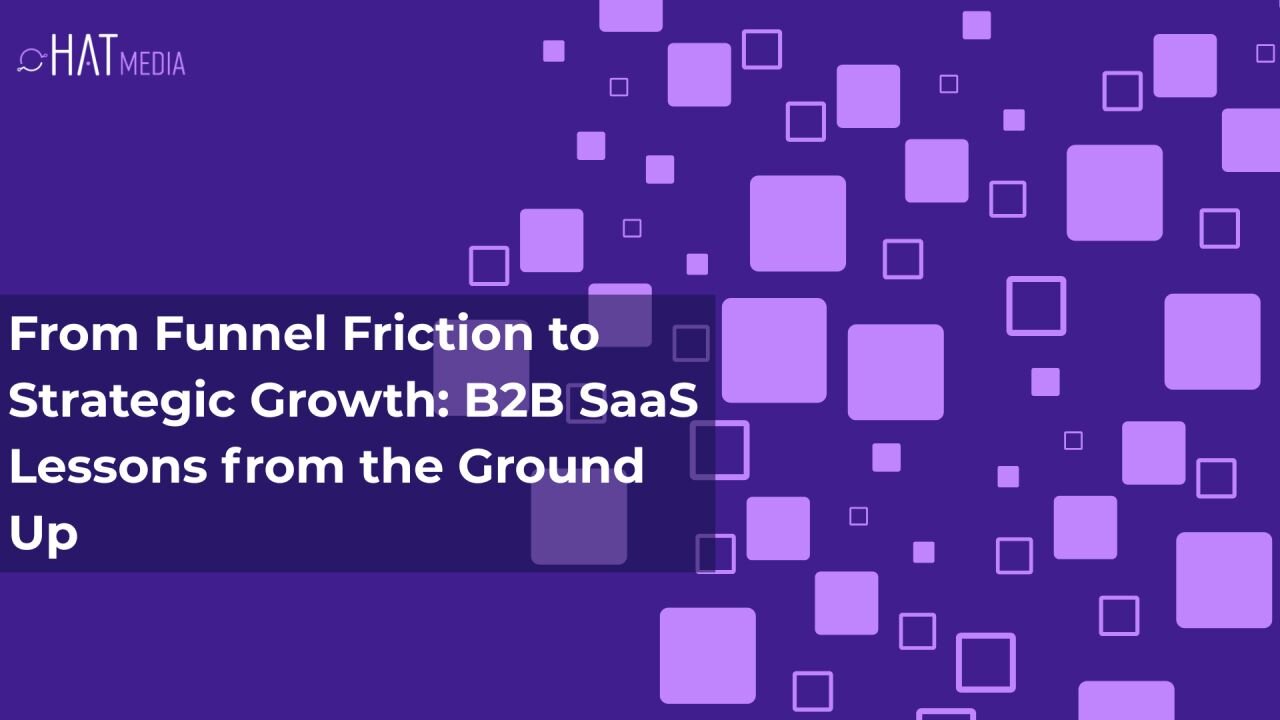Mastering SaaS Pricing: Insights from James Wilton of Monovate

Pricing is one of the most critical yet often overlooked aspects of running a successful SaaS business. Many founders set a price at the start and forget about it, only revisiting when they hit a growth ceiling or start losing customers. To shed light on this crucial topic, we recently sat down with James Wilton, founder of Monovate, on the SaaS Stories podcast to discuss pricing strategy, industry trends, and the challenges SaaS companies face when refining their pricing models.
The Journey to Becoming a Pricing Expert
James Wilton’s journey into the niche world of pricing strategy wasn’t planned. Having spent most of his career in consulting, he found himself transitioning into pricing when he joined an internal consulting group at Relix. The role offered him a better work-life balance at a time when he had just become a father, and it turned out to be a perfect fit. James became deeply fascinated by the strategic depth and creativity involved in pricing models, which led him to further his expertise at McKinsey, where he led the pricing service line for Fuel, McKinsey’s unit for startups and scale-ups.
However, while McKinsey offered unparalleled rigor and expertise, its pricing structure often made it difficult to work with smaller SaaS businesses. That realisation led James to found Monovate, a consultancy designed to offer high-quality pricing strategy advice to companies of all sizes without the prohibitive fees of a major consulting firm.
Listen to the full episode with James Wilton on the SaaS Stories podcast for a deeper dive into this topic.
Why SaaS Companies Struggle with Pricing
Many SaaS companies start with a simple good-better-best pricing model, often based on gut feelings rather than a strategic framework. Pricing is usually set during the early stages when the company is still validating its product-market fit. But as the business grows and evolves, the pricing model may no longer align with customer needs, competitive positioning, or business goals.
One common mistake SaaS founders make is tweaking pricing without a structured approach—raising or lowering prices based on short-term trial and error rather than a data-driven strategy. Without a clear pricing roadmap, businesses risk undervaluing their offering, losing customers due to abrupt price hikes, or failing to capture the true value they provide.
The Five Most Disruptive SaaS Pricing Models
James highlighted some of the most disruptive pricing models shaping the SaaS landscape today:
- AI-Based Pricing Models – AI-driven features are changing how companies price their software. Many SaaS companies initially included AI capabilities as a free beta feature, but as AI becomes more powerful, businesses must determine how to charge for its value.
- Usage-Based Pricing – Rather than charging per seat, more companies are moving to a model where customers pay based on actual usage. This approach aligns pricing with value delivered, making it easier for customers to scale up.
- Outcome-Based Pricing – Instead of charging based on inputs like users or usage, some SaaS companies, like Zendesk, are charging based on outcomes—e.g., successful customer service resolutions.
- Hybrid Pricing Models – A mix of subscription and consumption-based pricing is becoming more popular, allowing businesses to offer a flexible structure that accommodates different customer needs.
- Freemium with Add-Ons – Some SaaS businesses are shifting towards a core freemium model with premium add-ons, ensuring that paying customers are getting exclusive, high-value features.
How AI is Reshaping SaaS Pricing
Generative AI (Gen AI) is disrupting traditional pricing models. Many companies initially included AI features in their standard plans, but as these tools mature, businesses need to monetise them effectively without alienating their user base. A key challenge is determining whether to charge per use, per outcome, or as an additional tier.
James pointed out that companies like Canva faced backlash for drastically increasing their prices after adding AI tools. The lesson? Companies should communicate pricing changes transparently and offer a clear value proposition to justify the increase.
Common Pricing Mistakes SaaS Companies Make
- Delaying Price Increases – Many SaaS businesses hesitate to raise prices and end up with outdated, unsustainable pricing. James shared an example of a company that hadn’t raised prices in 12 years and was barely breaking even.
- Lack of Strategic Pricing Reviews – Pricing should be revisited annually, not just when profits decline. Introducing annual price escalators (e.g., inflation +2%) helps businesses maintain pricing sustainability.
- Poor Communication Around Pricing Changes – Simply telling customers, “We added AI, so we’re increasing prices,” isn’t effective. Instead, companies should frame price increases around fairness and the rising costs of maintaining quality service.
- Not Offering Flexible Pricing Tiers – Customers appreciate choice. A tiered or modular pricing approach allows customers to opt into higher-value features rather than feeling forced to accept a price hike.
How to Transition to a New Pricing Model
Switching from one pricing model to another (e.g., from per-user to usage-based pricing) can be tricky. Companies should:
- Communicate changes well in advance – Customers should have time to understand and adapt.
- Offer transition pricing – A gradual shift helps customers adjust rather than facing a sudden, significant cost increase.
- Provide legacy options – Allowing existing customers to stay on their current plan (with the option to upgrade) prevents backlash.
- Pilot new models with select customers – Testing before a full rollout helps fine-tune the approach.
Pricing as a Growth Lever
While product-led growth (PLG) and sales-led growth (SLG) are well-known concepts, pricing-led growth is an emerging strategy. Pricing can be a competitive advantage, especially when a company introduces a disruptive pricing model that aligns with customer value and buying preferences.
For example, the shift from traditional licensing fees to pay-as-you-go models has been a game-changer for SaaS businesses. Companies that align pricing with how customers derive value often see higher conversion rates and improved customer retention.
Learn More: Capturing Value
James Wilton recently published Capturing Value, a book designed to help SaaS companies build effective pricing strategies. It provides a step-by-step guide on crafting pricing models that align with business objectives, customer needs, and market trends.
The book is available on Amazon and leading bookstores, offering a valuable resource for SaaS founders, executives, and pricing strategists.
Final Thoughts
Pricing isn’t just about numbers—it’s about strategy, customer perception, and long-term business growth. SaaS companies that proactively manage their pricing strategy can unlock new revenue streams, improve customer retention, and stay competitive in an evolving market.

